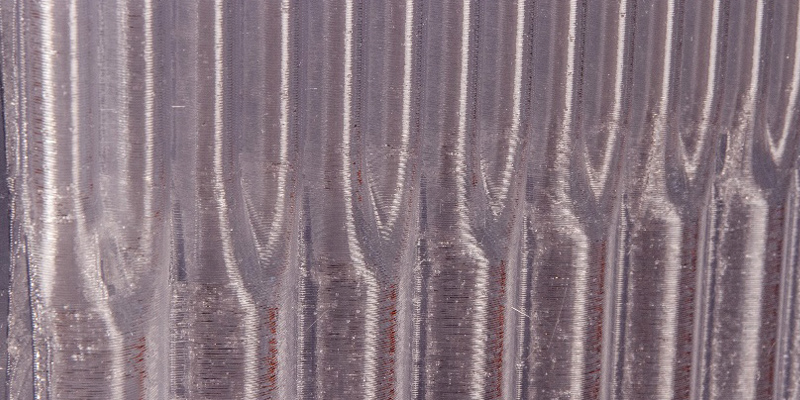Downloads
DOI:
https://doi.org/10.7480/jfde.2018.2.2081Abstract
Currently, several research projects investigate Additive Manufacturing (AM) technology as a possible construction method for future buildings. AM methods have some advantages over other production processes, such as great freedom of form, shape complexity, scale, and material use. These characteristics are relevant for façade applications, which demand the integration of several functions. Given the established capacity of AM to generate complex geometries, most existing research focuses on mechanical material properties and mainly in relation to the load-bearing capacity and the construction system. The integration of additional aspects is often achieved with post processing and the use of multiple materials. Research is needed to investigate properties for insulation, thermal storage, and energy harvesting, combined in one component and one production technology.
To this end, the research project “SPONG3D” aimed at developing a 3D-printed façade panel that integrates insulating properties with heat storage in a complex, mono-material geometry. This paper gives an overview of the panel development process, including aspects of material selection, printing process, structural properties, energy performance, and thermal heat storage. The development process was guided by experiments and simulations and resulted in the design and manufacturing of a full-scale façade element prototype using FDM printing with PETG. The project proved the possibility of the integration of functions in 3D-printed façades, but also highlighted the limitations and the need for further developments.
How to Cite
Published
Issue
Section
License
Copyright (c) 2018 Maria-Valentini Sarakinioti, Thaleia Konstantinou, Michela Turrin, Martin Tenpierik, Roel Loonen, Marie L. de Klijn-Chevalerias, Ulrich Knaack

This work is licensed under a Creative Commons Attribution 4.0 International License.
Authors or their institutions retain copyright to their publications without restrictions.
References
Ashby, M. F. (2006). The properties of foams and lattices. Philosophical Transactions of the Royal Society A: Mathematical, Physical and Engineering Sciences, 364(1838), 15-30. doi:10.1098/rsta.2005.1678
de Witte, D., de Klijn-Chevalerias, M. L., Loonen, R. C. G. M., Hensen, J. L. M., Knaack, U., & Zimmermann, G. (2017). Convective Concrete: Additive Manufacturing to facilitate activation of thermal mass. Journal of Facade Design and Engineering(1), 107-117%V 105. doi:10.7480/jfde.2017.1.1430
Favoino, F., Goia, F., Perino, M., & Serra, V. (2016). Experimental analysis of the energy performance of an ACTive, RESponsive and Solar (ACTRESS) façade module. Solar Energy, 133, 226-248. doi:http://dx.doi.org/10.1016/j.solener.2016.03.044
Gao, W., Zhang, Y., Ramanujan, D., Ramani, K., Chen, Y., Williams, C. B., . . . Zavattieri, P. D. (2015). The status, challenges, and future of additive manufacturing in engineering. Computer-Aided Design, 69, 65-89. doi:http://dx.doi.org/10.1016/j.cad.2015.04.001
Klein, T. (2013). Integral Facade Construction: Towards a new product architecture for curtain walls: TU Delft.
Labonnote, N., Rønnquist, A., Manum, B., & Rüther, P. (2016). Additive construction: State-of-the-art, challenges and opportunities. Automation in Construction, 72, Part 3, 347-366. doi:http://dx.doi.org/10.1016/j.autcon.2016.08.026
Loonen, R. C. G. M., Trčka, M., Cóstola, D., & Hensen, J. L. M. (2013). Climate adaptive building shells: State-of-the-art and future challenges. Renewable and Sustainable Energy Reviews, 25, 483-493. doi:https://doi.org/10.1016/j.rser.2013.04.016
Paoletti, I. (2017). Mass customization with additive manufacturing: new perspectives for multi performative building components in architecture.
Peters, B. (2016). Solar Bytes Pavilion. In D. Reinhardt, R. Saunders, & J. Burry (Eds.), Robotic Fabrication in Architecture, Art and Design 2016 (pp. 326-337). Cham: Springer International Publishing.
Quan, Z., Wu, A., Keefe, M., Qin, X., Yu, J., Suhr, J., . . . Chou, T.-W. (2015). Additive manufacturing of multi-directional preforms for composites: opportunities and challenges. Materials Today, 18(9), 503-512. doi:http://dx.doi.org/10.1016/j.mattod.2015.05.001
Sarakinioti, M. V. (2016). The spongy skin: The potentials of AM methods in cellular structures. Delft University of Technology, Delft. Retrieved from uuid:8e9de23d-4c31-4eff-bcec-131a80df08ee
Strauss, H., & Knaack, U. (2016). Additive Manufacturing for Future Facades. Journal of Facade Design and Engineering, 3(3-4), 11. doi:10.7480/jfde.2015.3-4.875
Yang, S., & Zhao, Y. F. (2015). Additive manufacturing-enabled design theory and methodology: a critical review. The International Journal of Advanced Manufacturing Technology, 80(1), 327-342. doi:10.1007/s00170-015-6994-5
